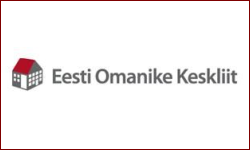When buying a new home, it seems that the biggest cost is likely to be the actual purchase price according to property developer Allan Kool, in an article published on Tõnu Toompark’s adaur blog. However, it gradually dawns on home owners that there are other costs associated with home buying which are essential; the most significant of these is energy costs, he goes on.
This article will attempt to make a comparison of apartments with different energy-classes. The two apartments in question are a 2006-built gas central-heated D class terraced apartment with a 2011-built A class apartment, which is being developed by Mr. Kool. In addition a typical family dwelling built in the 1960s, using coal as a heating medium will also be compared (the EU energy performace rating scale runs A-G, where A is the most efficient level and G the least efficient).
With a total area of 133 square metres, the 2006 built energy efficiency D-rated apartment experienced a total heating bill for 2010 of 2 150 Euros, or 180 Euros per month.
The 1960s-built house was classified with an energy efficiency F rating, and at 144 square metres in area cost 2 365 Euros per year, or 200 Euros per month.
By contrast the 2011-built apartment, located at Vuti Street 36/38 in the Kristiine region of Tallinn, the smallest of the three in the comparison at 125 square metres and with an energy rating level A (i.e. the most efficient) had a far lower figure for its estimated heating costs for 2011, at just 800 Euros (i.e. a little under 67 Euros per month).
Thus it can be said that the more efficiently-rated flats actually have heating costs that are over three times cheaper than a less well-rated apartment!
In general, Mr. Kool argues, energy price forecasts are somewhat tentative. He cites the claims of noted Estonian geologist Anto Raukas that energy prices in the future might be as much as three times as high as today. As a result, attempting to protect the return on investment becomes paramount in this situation.
Nonetheless at current price levels the A-rated terraced dwelling maintains a saving of 27 000 Euros over 10 years on that basis when compared with the D-rated property. When compared with the F-rated older family home that figure is even higher, at a 32 000 Euro saving over 10 years.
In summing up, it could be said that energy is a significant issue that directly affects an individual’s income. Costs, especially heating costs, should be thought about very hard when making a purchase in the housing market. A property with a lower purchase price can prove much more expensive in the long term in comparison with that with a more efficient level of energy consumption, thus it is worth paying close attention to the energy rating when buying your home.
The full article (in Estonian) including a table comparing the three properties studied is available here.
 Andrew Whyte
Andrew Whyte
Tallinn Property by Goodson & Red














